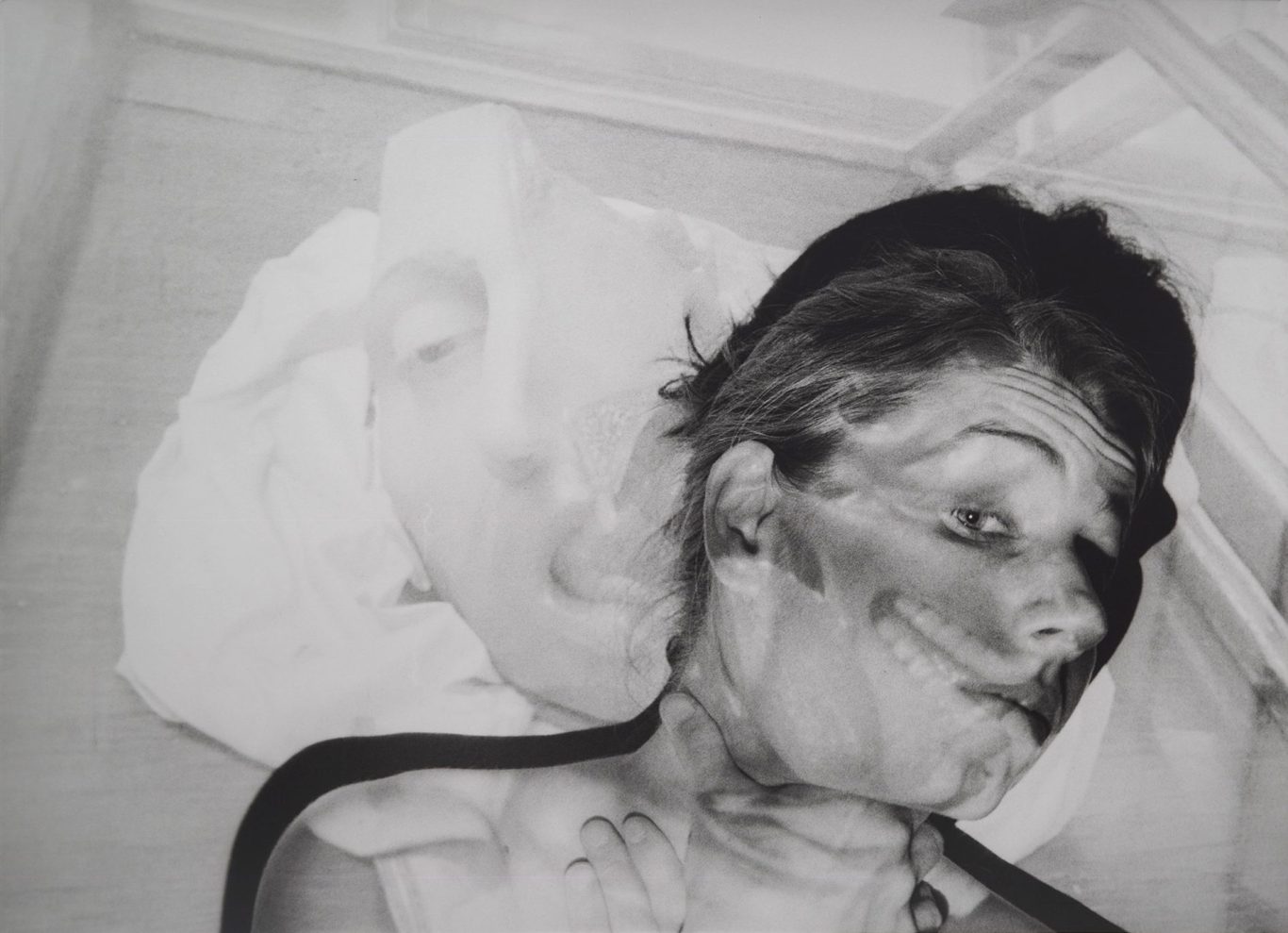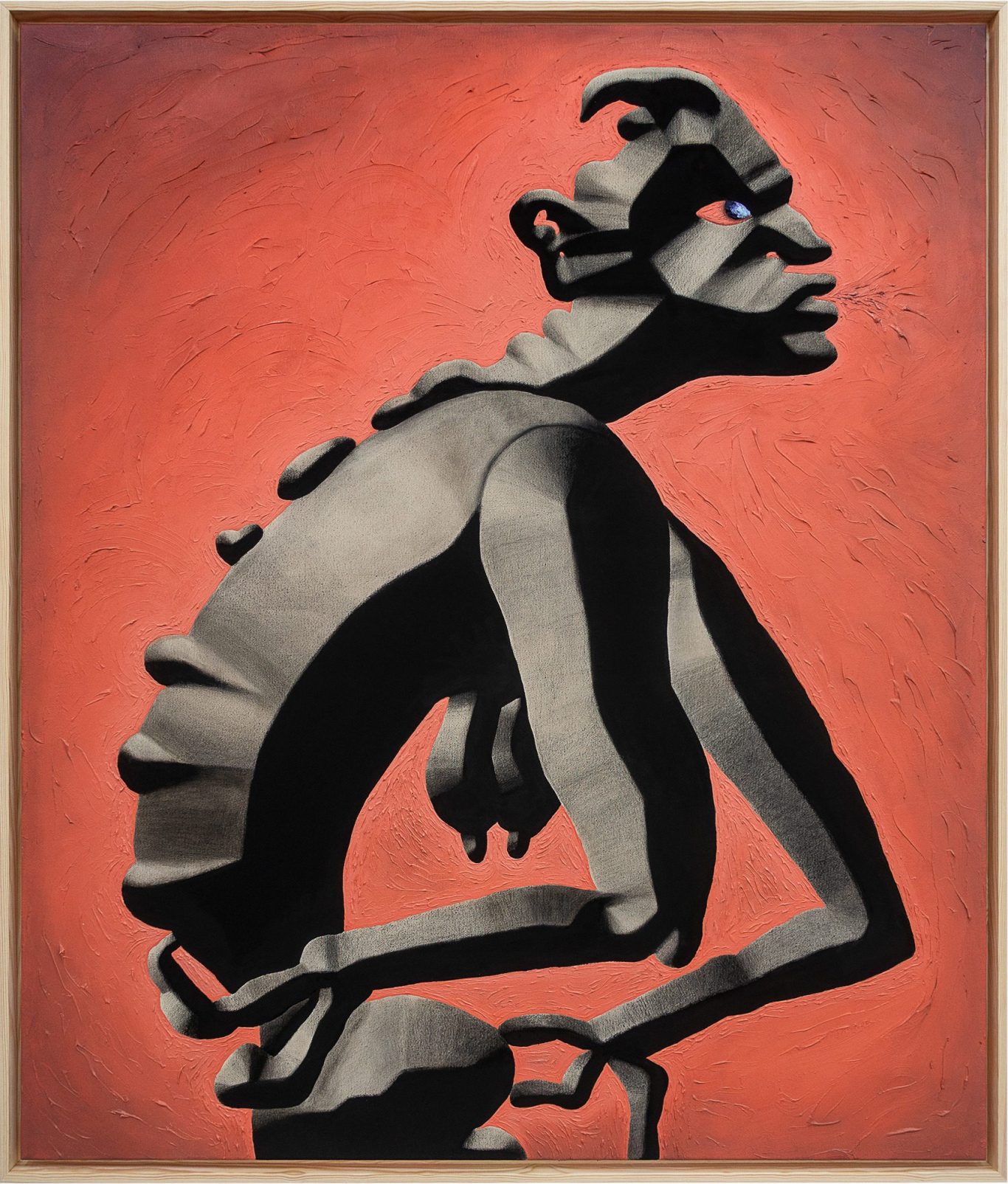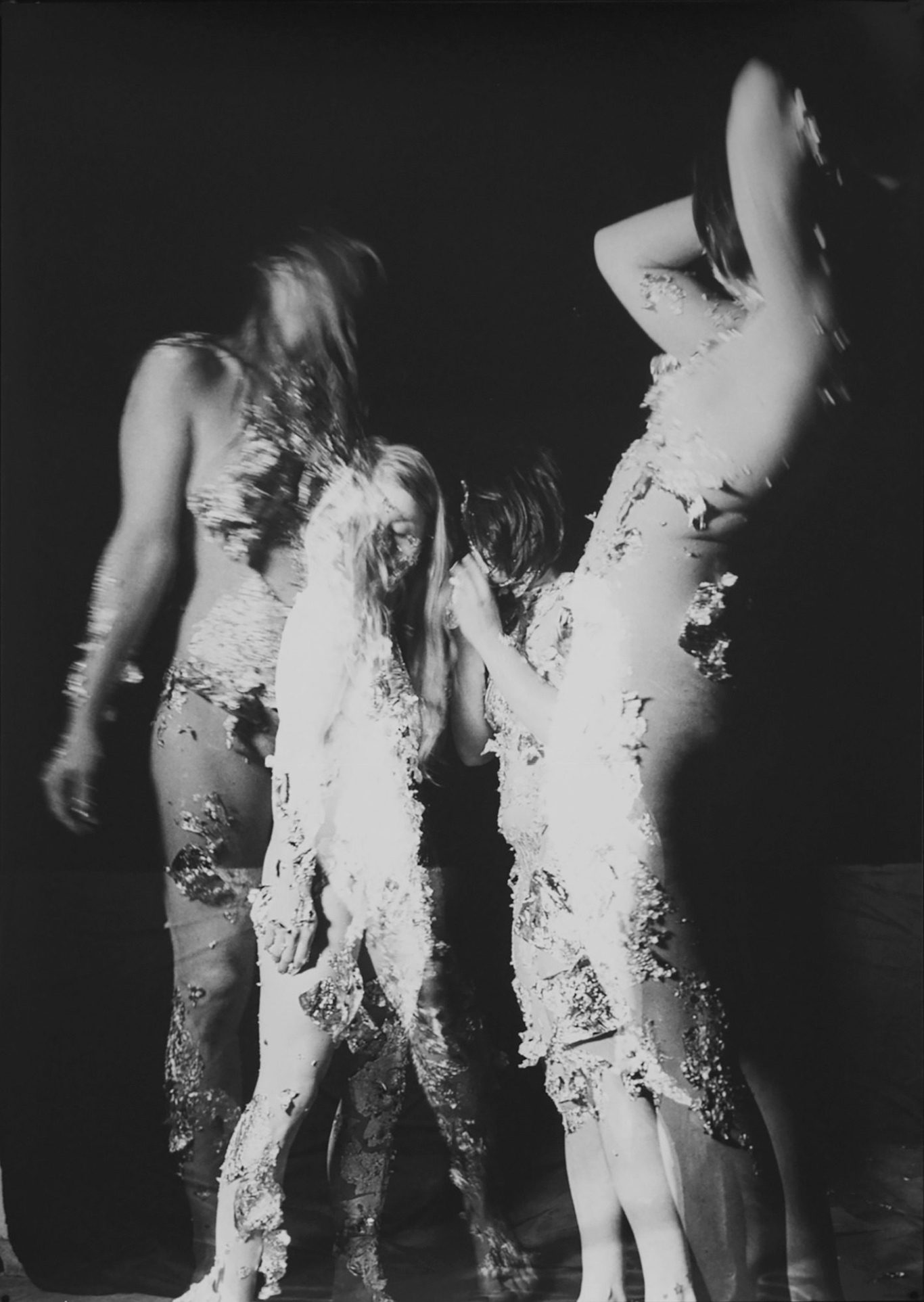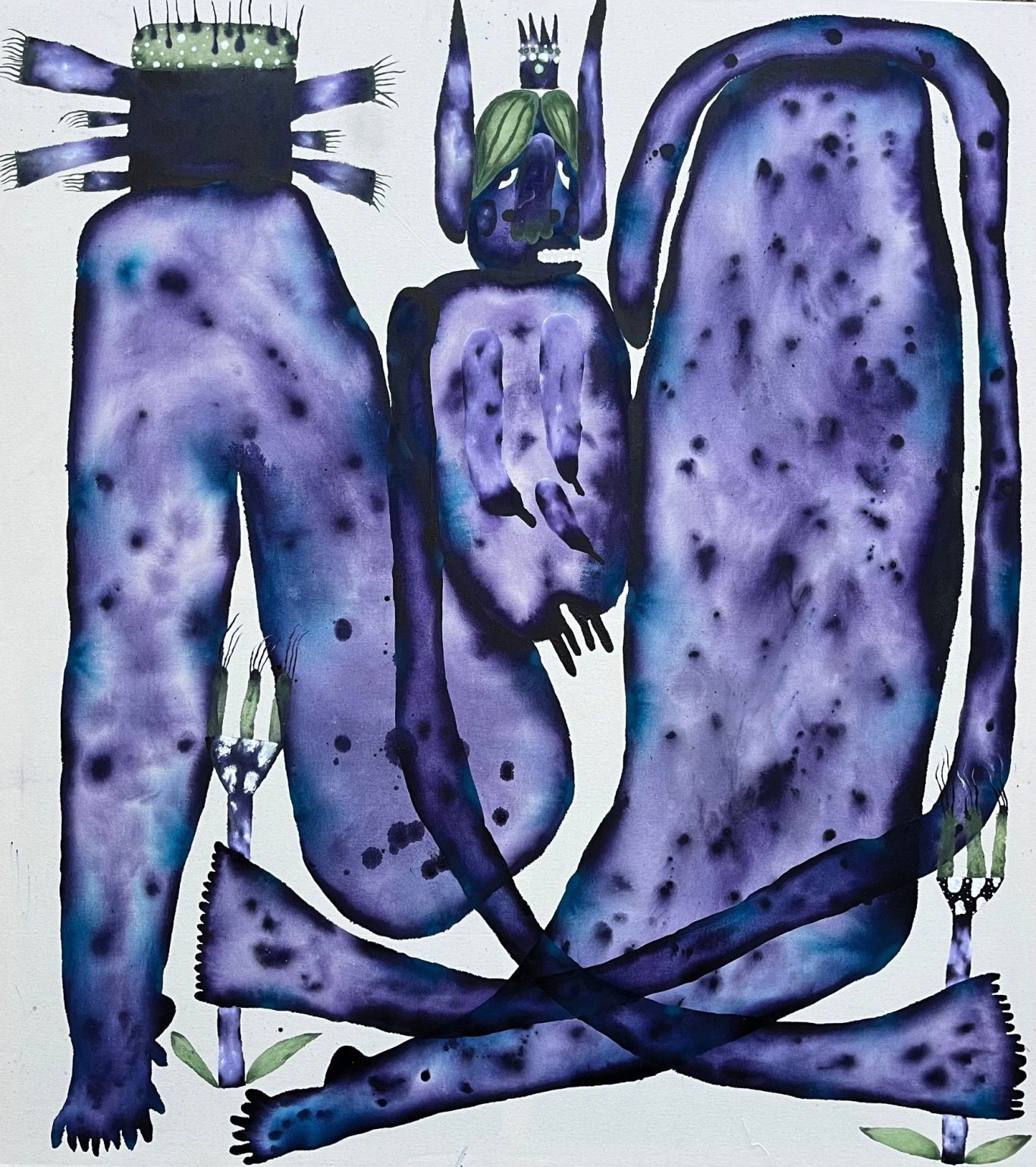WE SHALL BE MONSTERS
Carina Brandes
Cathrin Hoffmann
Sophia Süßmilch
08.12.2023 - 02.02.2024

Carina Brandes, Untitled, 2018, B/w photography on baryta paper, 51 × 71 cm, Edition of 2, Courtesy BQ, Berlin, and the artist
Monster trotzen dem Gewöhnlichen und stellen das Vorhersehbare kühn infrage. Auf ihren außergewöhnlichen Körpern spiegeln sich Emotionen wider, sie laden Furcht, Mitleid und Sehnsucht auf sich. Der monströse Körper ist nie einfach nur er selbst; vielmehr deutet er auf etwas anderes hin und wird zur Offenbarung, existiert gesellschaftlich als Hyperrepräsentation. Das Wort "Monster" leitet sich vom lateinischen „monstrare“ ab, was so viel bedeutet wie „warnen“ oder „zeigen“. Monster sind daher auch Sinnbilder für die Bedeutung von Sichtbarkeit, für ein Nach-außen-Tragen dessen, was sonst häufig im Verborgenen bleibt. Wenn man die Arbeiten von Carina Brandes, Cathrin Hoffmann und Sophia Süßmilch charakterisieren müsste, ließe sich zumindest das für sie alle sagen: In ihrer Auseinandersetzung mit unerwarteten Körpern, in ihrer künstlerischen Verzerrung und Verdrehung, Fragmentierung und Defragmentierung von Körpern, bringen sie verborgene widersprüchliche und ambige Emotionen zur Anschauung.
Die beunruhigende Faszination für den monströsen Körper hat zu vielen popkulturellen Ikonen geführt – vom Zyklopen und dem gigantischen Goliath bis hin zu Werwölfen oder Frankensteins Monster. Letzteres ist ein anomaler menschlicher Körper, zugleich vertraut und doch fremd, der die bequeme Unterscheidung zwischen dem, was menschlich ist, und dem, was nicht menschlich ist, durcheinanderbringt. Mary Shelleys Roman „Frankenstein“ ist auch der Ausstellungstitel „We Shall Be Monsters“ entliehen. „Wir werden Ungeheuer sein, aber dafür werden wir einander umso mehr zugetan sein“, versucht das Monster in dem Roman seinen Schöpfer Frankenstein davon zu überzeugen, dass dieser ihm eine (Leidens-)Gefährtin erschafft. Die Verstoßung von Frankensteins Monster zeigt, zu welchen Konsequenzen Vorurteile und Angst gegenüber dem „Anderen" führen können. Das ist eine Kerninterpretation von Shelleys Roman, die an Aktualität leider nichts eingebüßt hat.

Cathrin Hoffmann, Threatening To Expose, 2023, Charcoal, pastels and acrylic on canvas in pine wood frame, 134.5 x 114.5 x 3 cm, Courtesy Public Gallery, London, and the artist
Auf sehr unterschiedliche Weise wenden Sophia Süßmilch, Cathrin Hoffmann und Carina Brandes diese Lesart ins Feministische. Man ist nicht als Monster geboren, man wird dazu gemacht – durch Ausgrenzung, Ablehnung, Isolation. Erst einmal erschaffen, werden singuläre Körper politisiert, es werden ihnen gesellschaftliche Anliegen auferlegt, sozusagen als Meditationen über individuelle und kollektive Werte, über Identität und Orientierung.
Carina Brandes arbeitet in Schwarz-Weiß, analog und mit ihrem eigenen Körper, den sie jedoch durch eine theatralisch und abgründig-poetische Weise zur Figur werden lässt und damit vom subjektiv Persönlichen ins gesellschaftlich Monströse überführt. Auch Cathrin Hoffmann erschafft Frankenstein-gleich in ihren Arbeiten Körper, bei denen es sich nicht um Portraits individueller Persönlichkeiten handelt, sondern eher um Portraits von Gefühlskörpern, die durch Verrenkungen und Überdehnungen von Sehnsucht, Furcht, Lust oder Trauer erzählen. In wütend-fröhlicher Direktheit hat auch Sophia Süßmilch Gestalten erschaffen, die die Widersprüchlichkeit von Frankensteins Monster in die Gegenwart überführen. Sie sind monsterhaft und doch liebenswert, trotz ihrer Gewalt- und Schmerzerfahrungen sind sie auch Schutzfiguren. Bei all ihrer Unmenschlichkeit sind sie zutiefst menschlich.
Annekathrin Kohout

Sophia Süßmilch, Ödipuskomplex, 2023, Fineart print on Hahnemühle PhotoRag, 60x40 cm, Edition of 5+1, Courtesy MARTINETZ, Cologne, and the artist, Photo: Appolonia Bitzan
WE SHALL BE MONSTERS
Carina Brandes
Cathrin Hoffmann
Sophia Süßmilch
08.12.2023 - 02.02.2024

Carina Brandes, „Untitled“, 2018, B/w photography on baryta paper, 136 x 97 cm, Edition of 4, Courtesy BQ, Berlin, and the artist, Photo Roman März, Berlin
Monsters defy the conventional and boldly question the predictable. Their unusual bodies reflect emotions, harbouring fear, pity and longing. The monstrous body is never just of itself; rather, it alludes to something else and becomes a manifestation, existing socially as a hyper-representation. The word ‘monster’ comes from the Latin ‘monstrare’, which means ‘to warn’ or ‘to show’. Consequently, monsters are symbolic of the significance of transparency, of externalising that which otherwise tends to remain hidden. If one had to characterise the works of Carina Brandes, Cathrin Hoffmann and Sophia Süßmilch, then this at the very least could be said for all of them: they make hidden, contradictory and ambiguous emotions visible through their explorations of unexpected bodies, and their artistic distortion and twisting, fragmentation and defragmentation of bodies.
The disturbing fascination with the monstrous body has led to many pop-cultural icons – from the Cyclops and the gigantic Goliath to werewolves or Frankenstein's monster. The latter is an abnormal human body, at once both familiar and alien, that confounds our comforting distinction between what is human and what is not. The title of the exhibition ‘We Shall Be Monsters’ is borrowed from Mary Shelley's novel ‘Frankenstein’. ‘We shall be monsters, but we shall be more attached to one another’, the monster in the novel attempts to convince his creator Frankenstein to build him a (suffering) companion. The rejection of Frankenstein's monster demonstrates the consequences that prejudice and fear of the ‘other’ can lead to. This core interpretation of Shelley's novel has unfortunately lost none of its relevance.

Cathrin Hoffmann, Loosely Sewn Together, 2023, charcoal, pastels and acrylic on canvas in pine wood frame, 175x144x3 cm, Courtesy Public Gallery, London and the aritst
In very different ways, Sophia Süßmilch, Cathrin Hoffmann and Carina Brandes take a feminist approach to this reading. One is not born a monster, one is turned into one – through marginalisation, rejection and isolation. Once created, individual bodies are politicised, social concerns are imposed upon them, as a kind of meditation on individual and collective values, on identity and orientation.
Carina Brandes works in black and white, analogue and with her own body that she, in a theatrical and abysmally poetic manner, transforms into a figure, thereby transferring the subjectively personal into the socially monstrous. Cathrin Hoffmann similarly creates Frankenstein-like bodies in her works, which are not portraits of individual personalities, but rather portraits of emotional bodies that speak of longing, fear, lust and grief through their contortions and over-extensions. With a furious and cheerful directness, Sophia Süßmilch too has created figures that bring the contradictions of Frankenstein's monster into the present day. They are monstrous and yet lovable; despite their experiences of violence and pain, they are also protective figures. For all their inhumanity, they are deeply human.
Annekathrin Kohout

Sophia Süßmilch, Wald und Wiesenkönigin, 2023, pigment and acrylic on canvas, 180x150 cm, Courtesy Martinetz, Cologne and the artist
MARTINETZ
Moltkestr. 81
50674 Cologne
mail@petramartinetz.de
Opening hours:
Wednesday - Friday, 1-6 PM
Saturday, 12-4 PM
and by appointment
© 2025 Petra Martinetz. Alle Rechte vorbehalten.
Wir benötigen Ihre Zustimmung zum Laden der Übersetzungen
Wir nutzen einen Drittanbieter-Service, um den Inhalt der Website zu übersetzen, der möglicherweise Daten über Ihre Aktivitäten sammelt. Bitte überprüfen Sie die Details in der Datenschutzerklärung und akzeptieren Sie den Dienst, um die Übersetzungen zu sehen.
